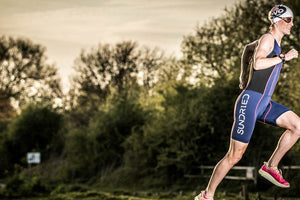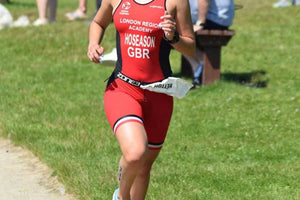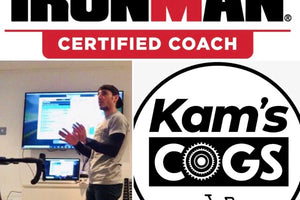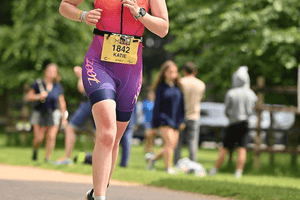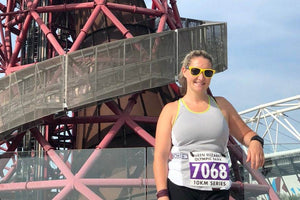
The simplicity of running is something that has always appealed to me. Having the ability to slip on a pair of trainers and immerse myself in the great outdoors is a wonderful feeling and one which I would encourage everyone to experience.
Running is a great way to get fit but it’s important to ensure that you don’t fall into the trap of going from 0-100 with your training. Running is an incredibly high impact sport and so it takes time and patience in order to prevent injuries or burnout occurring. This blog will detail the best approach to take for running newbies which is both simple and easily attainable.
How to train
Sign up to an event
If you are serious about starting your running journey, finding a running event is the perfect way to ensure that you keep plodding on, even in the gloomy and cold winter months. It doesn’t have to be a high-profile marathon or a highly competitive race, park runs can be a great (free) way to experience a running event that is easily accessible to everyone.
Whatever your aim, make sure you set a date and put it in your diary so that you stay committed to the cause.
Get your running form right
Whether you are a natural heel striker or lead with your toes, it’s important to maintain the form that feels natural to you. Just remember to look at the horizon, stand tall, use your arms to help drive your legs, and relax your upper body.
The Run-walk method
Starting to run is hard (no doubt about it) and so following a run-walk session is the perfect way to build up your running gradually. Start at 1-minute running intervals with 2minutes of walking in-between for the duration of your run; gradually build this up to longer running efforts and shorter periods of walking.
Be patient with this method and you will be running non-stop in no time!
Plan and track your training
If you are starting out, keeping training simple is the best way to ensure success. Here are some basic points for a great start-up training plan:
- Run or run/walk 20-30minutes two days per week
- Run or run/walk for 40minutes-1hour on the weekend
- Rest for 2-3 days per week and cross-train for the rest
- Run at a comfortable pace
Once you have your plan sorted, find a training platform that enables you to record and keep track of your progress. This can help with future planning and acknowledging progress. Strava, Garmin Connect, Run Keeper, Training Peaks, and X-Hale are all great platforms that keep an electronic record of your training.
Clothing, Footwear, and Accessories
Find the right running shoes
It’s important to find a shoe that is comfortable and provides an adequate amount of cushioning and support whilst you run. Avoid making a decision based on fashion, brand names, or sales pitches. Source trainers that are specifically designed for running and have good third-party reviews. Lastly, ensure that you try out the trainers in a shop which provides customers with a treadmill.
Invest in some good socks
Socks are often overlooked within the running industry, but poorly fitting socks can cause blisters which will keep you off your feet for days. Choose a breathable, seamless and snug sock that is made from a sweat-wicking material. Much like your trainers, the most important feature of a sock is comfort, so try a style out before investing in a few pairs.
Choosing your playlist
Upbeat music, a podcast, or an audio book can be a great distraction whilst you are out running.
Using a timing device
It’s important to use a timing device to help manage your training. It doesn’t have to be a high-tech GPS watch; a simple stopwatch will suffice. Alternatively, you can use your phone to track your activity through a third-party app such as Strava or Run Keeper.
Fuelling your training
When to eat
One of the biggest mistakes you can make as a runner is to not eat before exercise. Plan to eat one hour before your run to keep your energy supplies topped up without causing gastrointestinal distress.
Once you have finished running, try to consume a snack that contains a good balance of protein and carbohydrates. A good post-workout snack will help the body re-synthesise muscle glycogen, recover more rapidly, and reduce delayed-onset muscle soreness.
What to eat
Before and after a run you should aim to consume a snack the size of your fist, including carbohydrates and some protein. A peanut butter sandwich is a good pre workout option and a glass of chocolate milk is the perfect recovery fuel.
Staying hydrated
Keep hydrated throughout the day with regular glasses of water. On longer runs (60min+) you may want to take an electrolyte drink to help replenish the water-soluble nutrients that are lost when you sweat.
Preventing Injuries
Stretching
Dynamic stretching prior to a run will warm your muscles through the repetitive movements. An ideal warm-up would include ‘form drills’ like high knees and heel kicks.
Cramping solutions
Cramps during exercise could be a result of over-excited nerve endings, probably due to fatigue. Stretching the affected muscles will calm the misfiring nervous system connections which will ease the discomfort.
Taking rest days
Rest is often a word that runners dread, but it is a vital part of any training routine to ensure that your body has enough time to recover and adapt. Taking a few days off your feet each week will ensure that you don’t pick up any niggling injuries.
Planning recovery weeks
It’s wise to decrease your running volume and intensity one week in every month to ensure that your body isn’t being overworked. One of the main reason’s runners suffer chronic injuries and illnesses is through over training and excess stress placed on their body.
Running is a sport which can provide a great means of activity in a very simple but effective way. Follow my running approach for beginners and you’ll be pounding the pavements in no time.
About the author: Laura Smith is an elite level athlete and has been a Sundried ambassador since 2017.



